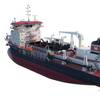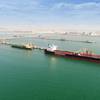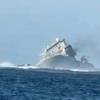Study: Closure of the St. Lawrence Seaway Not Needed to Fight Invasive Species
Closing the St. Lawrence Seaway to ocean-going vessels is not the answer to ending the further introduction of aquatic invasive species (AIS) into the Great Lakes, said a study by the National Academy of Sciences. The study drew praise from the U.S. Saint Lawrence Seaway Development Corporation (SLSDC), the federal agency responsible for the passage of vessels into the Great Lakes.
The study, Great Lakes Shipping, Trade, and Aquatic Invasive Species, concluded that closing the Seaway could not guarantee prevention of further invasives such as zebra and quagga mussels as non-ship-related vectors would continue to allow AIS into the Great Lakes. Closing the Seaway to even one category of traffic would likely reduce economic competition, raise consumer prices, and increase greenhouse gas emissions. As a result, “The committee’s evaluation of the effects of closing the seaway to transoceanic shipping led it to conclude that this action would be not only high risk but also an impractical and unsatisfactory compromise.”
“The National Academy of Sciences has confirmed that the idea of closing the Seaway is legally unfeasible, politically unrealistic, and economically disastrous for the U.S. and Canada,” said Administrator Terry Johnson, who heads the U.S. Saint Lawrence Seaway Development Corporation (SLSDC). “Closure would damage trade, increase surface congestion, provoke negative environmental impacts, and still fail to prevent future non-native species from entering the Great Lakes,” Johnson said.
A 13-member committee of U.S. and Canadian scientists, engineers and academics conducted the study, which began in 2004. The group recommended nine actions to enhance global trade in the region and end ship-borne introductions of AIS into the Great Lakes. One of these would require all vessels entering the Great Lakes to take protective measures similar to those currently required for transoceanic vessels.
In March 2008, the SLSDC issued regulations that followed Transport Canada’s lead in requiring saltwater flushing for all foreign-flagged vessels fully loaded with cargo entering the Seaway from outside the 200-mile Exclusive Economic Zone. This action was cited by the report as an example of the type of effective ballast-water management practice that is required.
The NAS Study, Great Lakes Shipping, Trade, and Aquatic Invasive Species, is available online.










